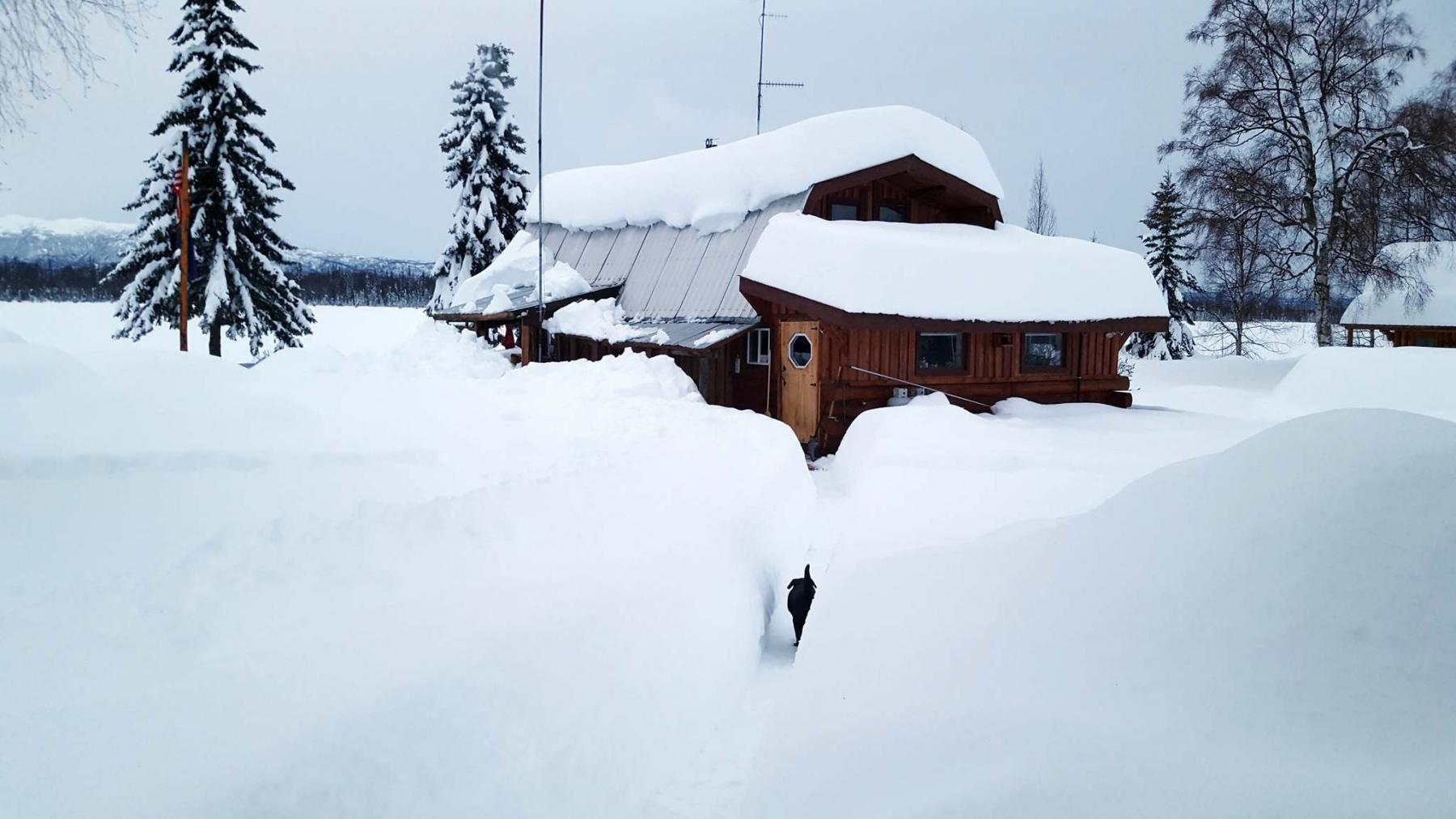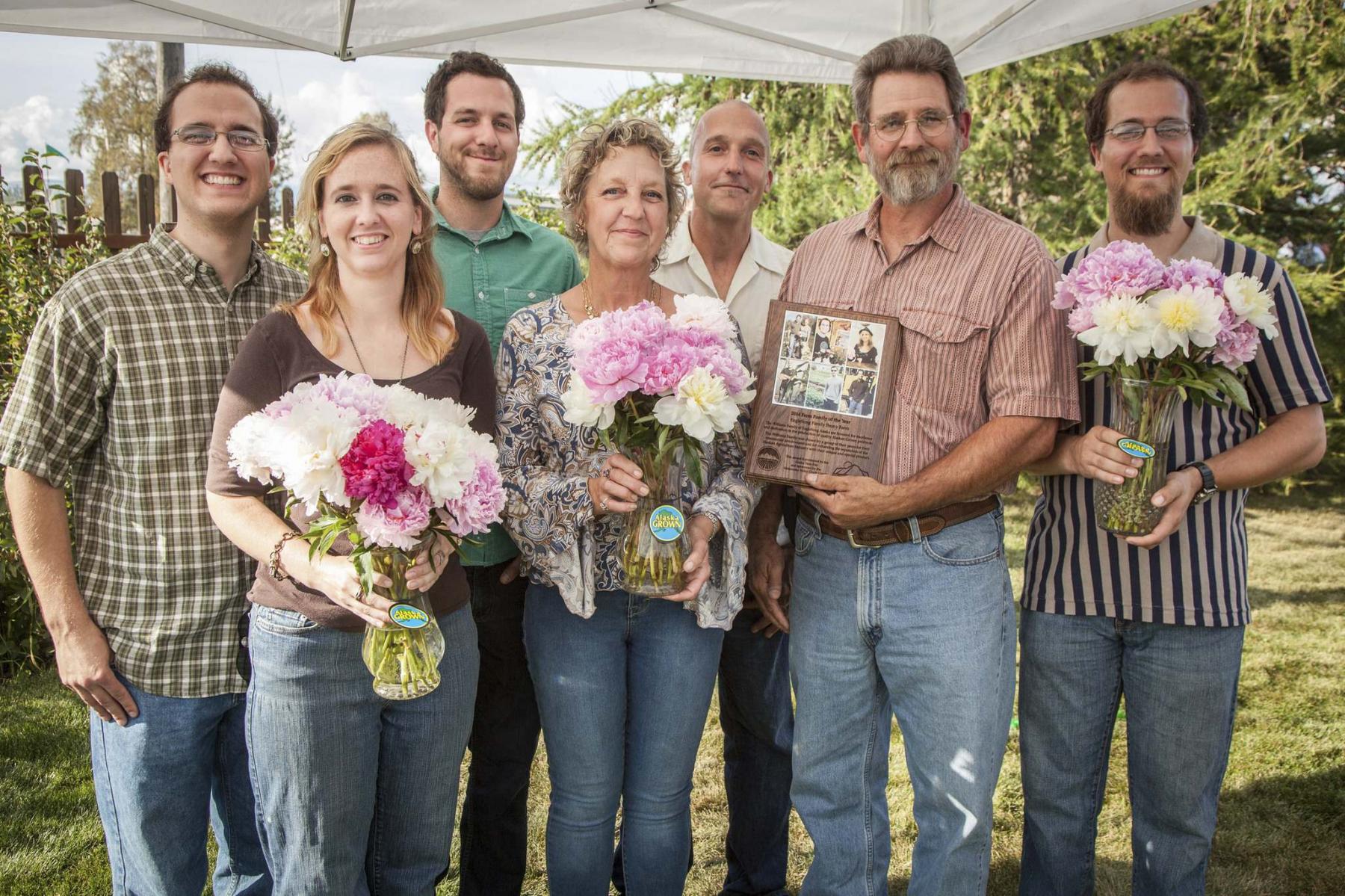
The Williams family are peony farmers, and love life off the grid in Alaska.
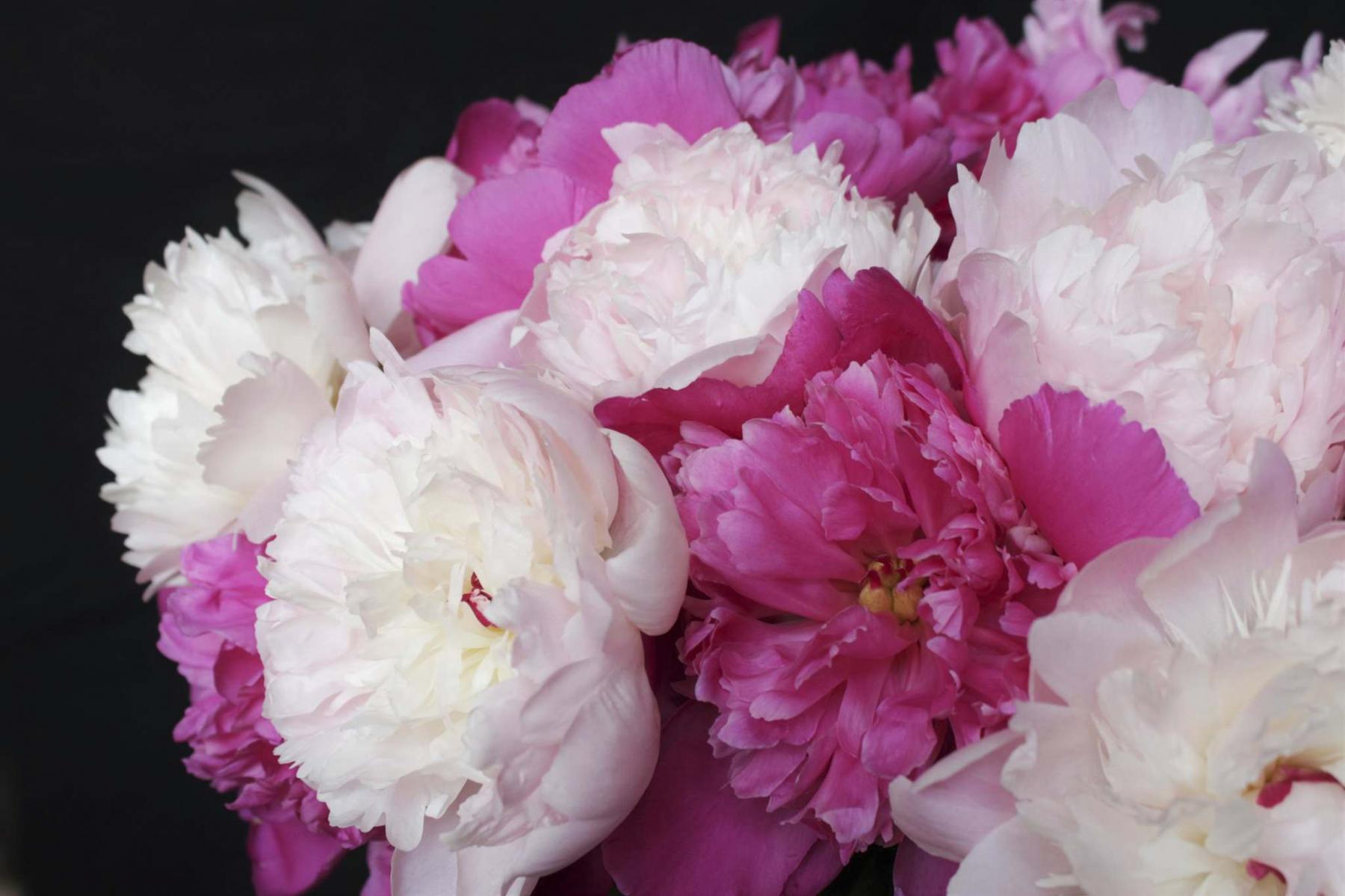
EagleSong plans to ship peony roots to Canada. Blush-coloured peonies are the most popular.
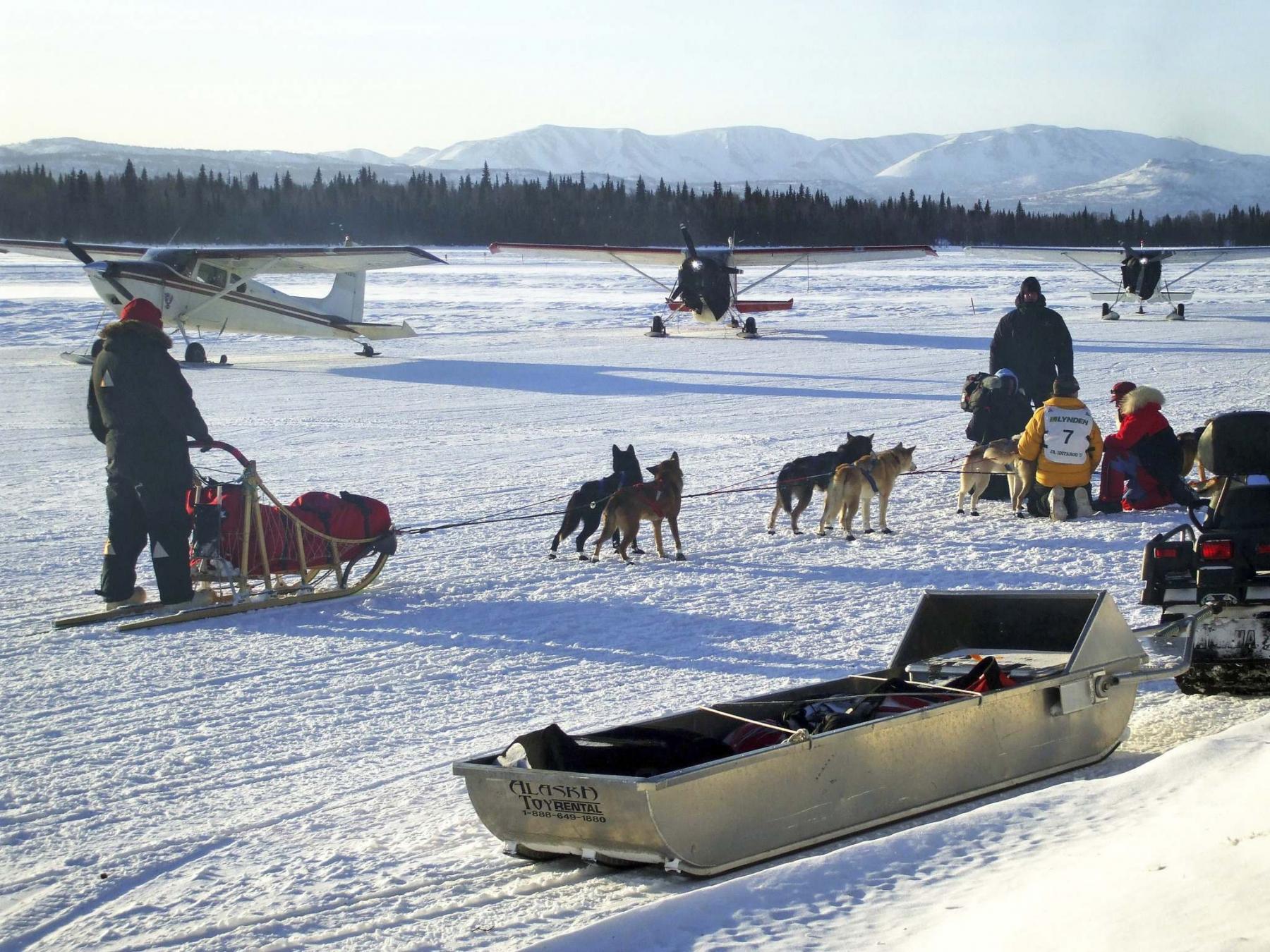
EagleSong is a checkpoint for the annual Junior Iditarod sled dog race.
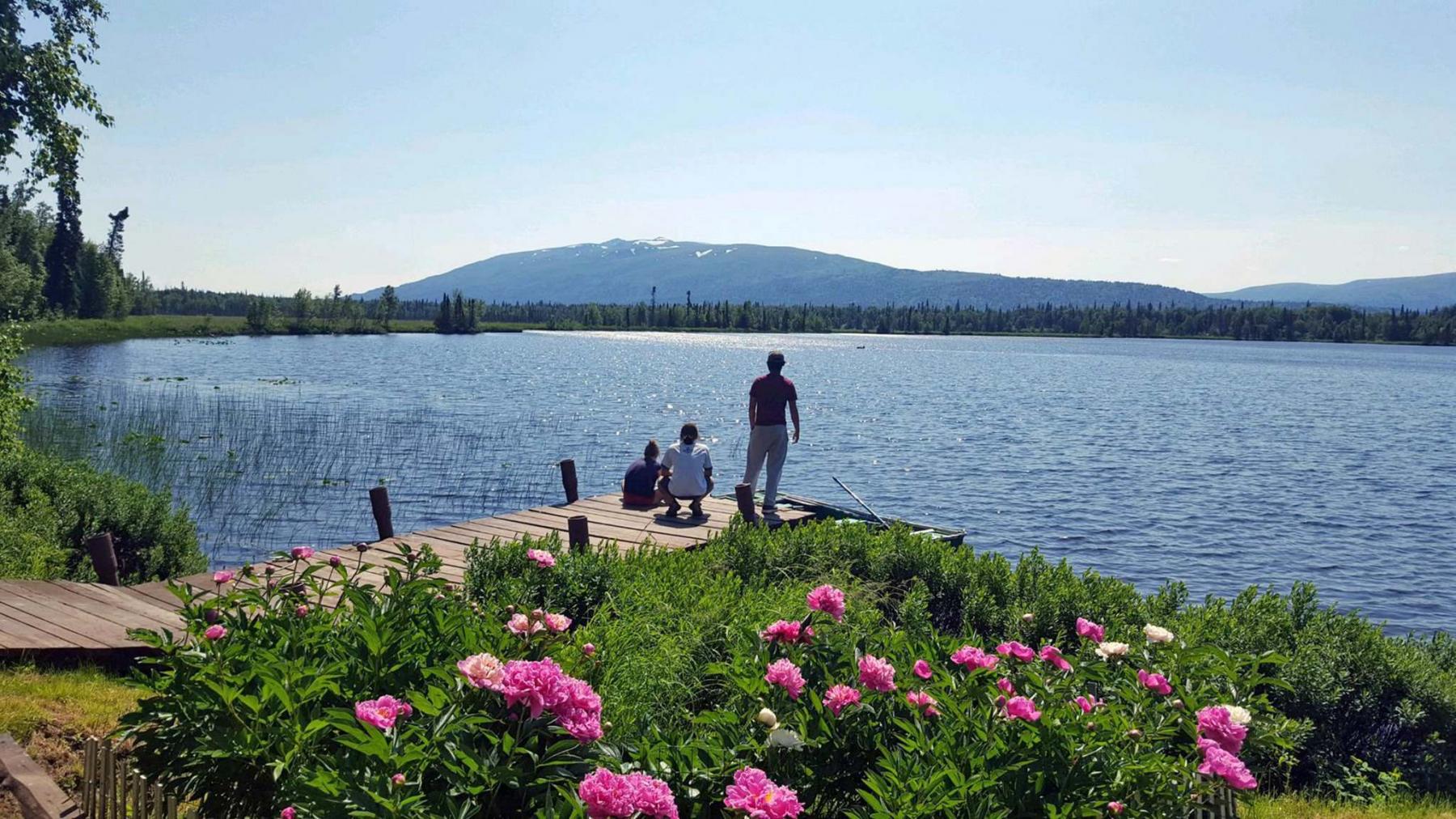
Photos supplied by EagleSong Family Peony Farm
Mount Susitna dominates the view from EagleSong Family Peony Farm.
Most of us take small comforts for granted, things like indoor plumbing, heating and electricity. We like to live in a location where we are close to all amenities and have easy access to transportation. We enjoy having friends and family spontaneously drop by. And what would we do without the convenience of fast food?
Mike and Paula Williams choose to live differently — so differently, in fact, that their off-the-grid lifestyle in a remote and isolated part of Alaska has been the subject of television shows. Who are they — survivalists? Actually, they’re peony farmers.
The couple owns EagleSong Family Peony Farm. Their picturesque, five-acre peony farm sits on 38 acres of land in the bush 64 kilometres northwest of Anchorage, Alaska. The view out their front door is dominated by Mount Susitna.
Their rigorous, authentic life includes no street lights, no electric lines or telephone poles, and no roads. During the long days of summer, travel is strictly by air, but in a typical winter, they rely on travel by air and snow machine. Since they have no indoor plumbing, they utilize an outhouse and outdoor shower house — even in winter. There are chickens to feed each day, wood to chop, moose to hunt, huge volumes of snow to clear from paths and trails, and next year’s peony season to get ready for.
"One of the things that we have learned from living in the bush for 26 years, is to keep things simple," Mike says. "Because of the cold weather extremes that we experience, the more elaborate we try and become — like having indoor plumbing — the greater the potential of failure."
On Christmas morning, there will be a blazing fire in their woodstove to warm the cosy confines of their hand-built log cabin, but the Dec. 21 winter solstice is also a day of celebration. Not all of us who live in the Northern Hemisphere take note of the limited hours of daylight on Dec. 21, when the North Pole is tilted furthest from the sun. At EagleSong, total daylight amounts to three hours 42 minutes on the shortest day of the year.
Mike and Paula are digging out from more than 130 centimetres of snow. Over a 36-hour period, beginning the day before the American Thanksgiving on Nov. 28, 116 cm of snow fell, more than they’d ever seen. "The most snow that we have ever measured in our 26 years here," Mike says, "was 101 cm in 1994."
When he heard the forecast, Mike set up a tripod inside the cabin. Directed at the front deck, it recorded a timeline over the 36-hour period. "The video ended up going viral and had over 100,000 views in a week," Mike says. The U.S. National Weather Service posted it on their website and both NBC News and CBS News requested permission to show it around the U.S.
Weather is a very big deal in Alaska. There is winter and then there is June, July and August. In August, when I first met Mike on a trip to Alaska as part of an agricultural trade mission sponsored by the Western United States Agricultural Trade Association, the state was experiencing record heat. The high temperatures in July in Anchorage shattered all previous records. Alaska’s enviable 20-plus hours of sunlight during the summer months give Alaska peony farmers a distinct edge. Not only are Alaska-grown peony blooms bigger and have more saturated colours, the growing season is from July to September, unlike anywhere else in the world.
In addition to record heat in 2019, the dry conditions and extreme fire danger was unprecedented this year, Mike says. "Smoke at times was so bad in September that we cancelled planes coming and going from EagleSong for days at a time." Fortunately, south-central Alaska, where EagleSong is located, also experienced record-setting rainfall this fall, which helped to extinguish the fires and clear smoke from the air. The abundance of rain combined with the epic snowfall on Thanksgiving Day (and the snow that continues to fall) bodes well for good soil moisture next spring.
EagleSong has two runways. In winter, Mike and Paula are constantly in motion utilizing the frozen Susitna and Yentna rivers much like an interstate highway to haul everything that is heavy or large from fuel to fertilizer, building materials, equipment, chicken feed and, at one time, even a king-size mattress. Despite the snow that continues to fall, temperatures are mild and the rivers are still open and flowing. "We are projecting that it may not be until sometime in mid- to late January before we can be mobile again," Mike says.
Before EagleSong became known for its cut flower peonies (75,000 are shipped annually from its packing house at Anchorage International Airport), it was a hunting lodge. Mike and Paula keep the roofs of all 26 of their buildings clear of snow as well as the poly film on their high tunnels, which are used to increase productivity in northern latitudes and cold soils and help to extend the peony growing season. Solar panels, too, must be kept free of snow. Solar systems provide 94 per cent of their power needs, including the power needed for their walk-in peony coolers.
Mike and Paula and all of their four children are very involved with the Junior Iditarod sled dog race that takes place each February. In 1999, EagleSong became one of just two checkpoints for the 240 km sled dog race. They keep trails open for the many mushers who come through.
In the bush, a chainsaw is a very common and necessary tool, Mike says, to cut firewood and clear trails. Mike uses a chainsaw to cut burls from live trees. In his spare time, he carves the burls into unique bowls, which he then sells.
What are Mike’s and Paula’s plans for Christmas? It all depends on the weather, but if conditions are good, friends and family will arrive by snow machine or dog team. Their closest neighbour lives 20 km away. Their freezer is well-stocked with moose meat and sometimes Santa Claus drops by for a visit.
After the holidays, plans for next year’s peony season will be well underway. In January, they will begin advertising for workers to assist in the peony fields once the snow melts in May. They’ll also evaluate the past growing season. There is a huge demand for blush-coloured peonies, Mike says. A popular variety is Nick Shaylor. In fall, they planted another 500 peony roots.
Each September, Mike and Paula ship peony roots to customers in the lower 48 states. They are looking forward to when the new NAFTA deal (Canada-United States-Mexico Agreement known as CUSMA) comes into effect so they can begin figuring out the logistics of shipping peony roots to Canada. It’s easy enough to ship cut peony flowers to Canada but different regulations govern bare peony roots because they have soil on them, Mike says, and inspections are required. "Canada is a huge market for us," Mike says.
Could you imagine living life off the grid? Mike and Paula invite you to come for a stay. Visit EagleSong Family Peony Farm on Facebook.colleenizacharias@gmail.com

